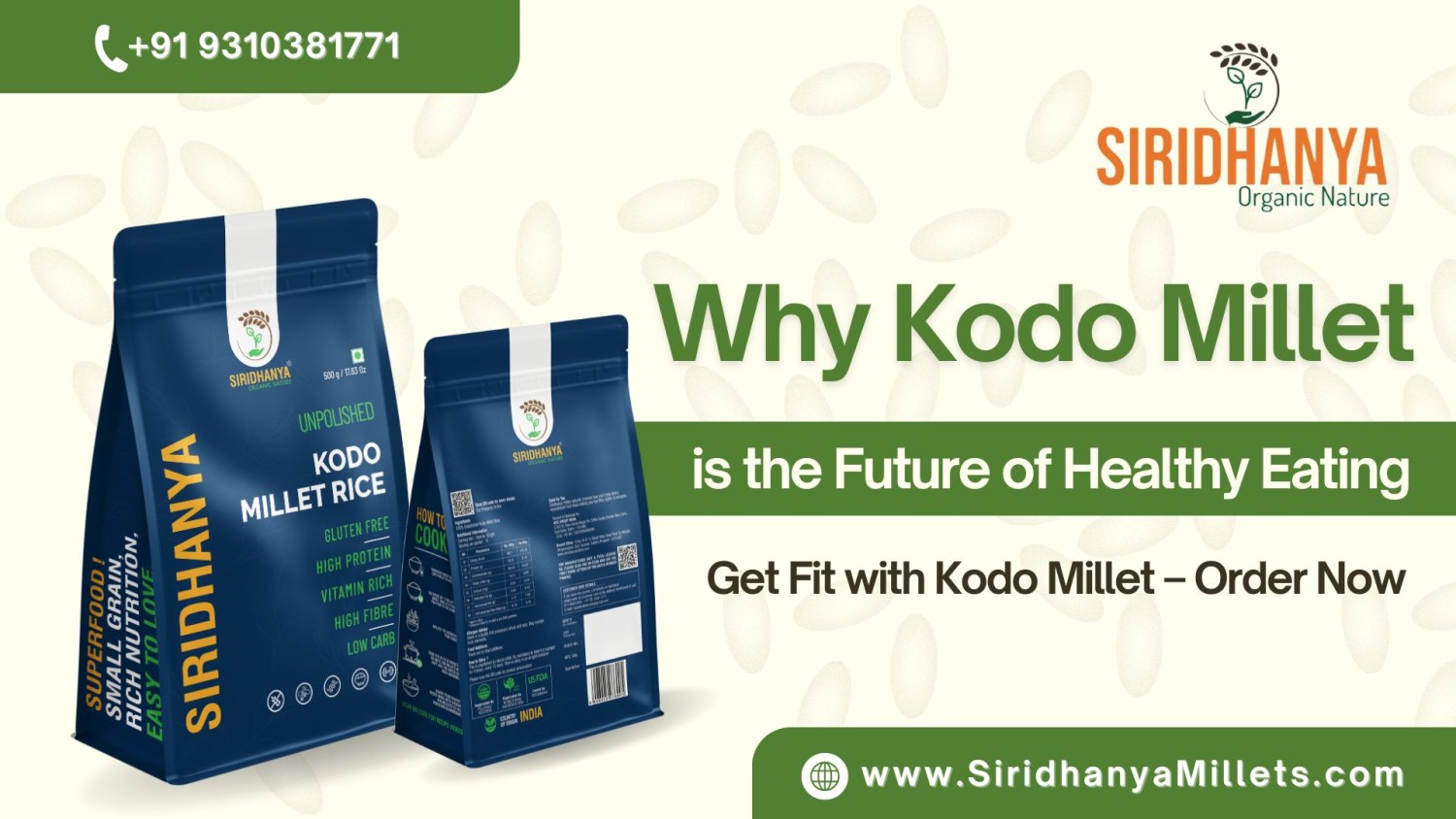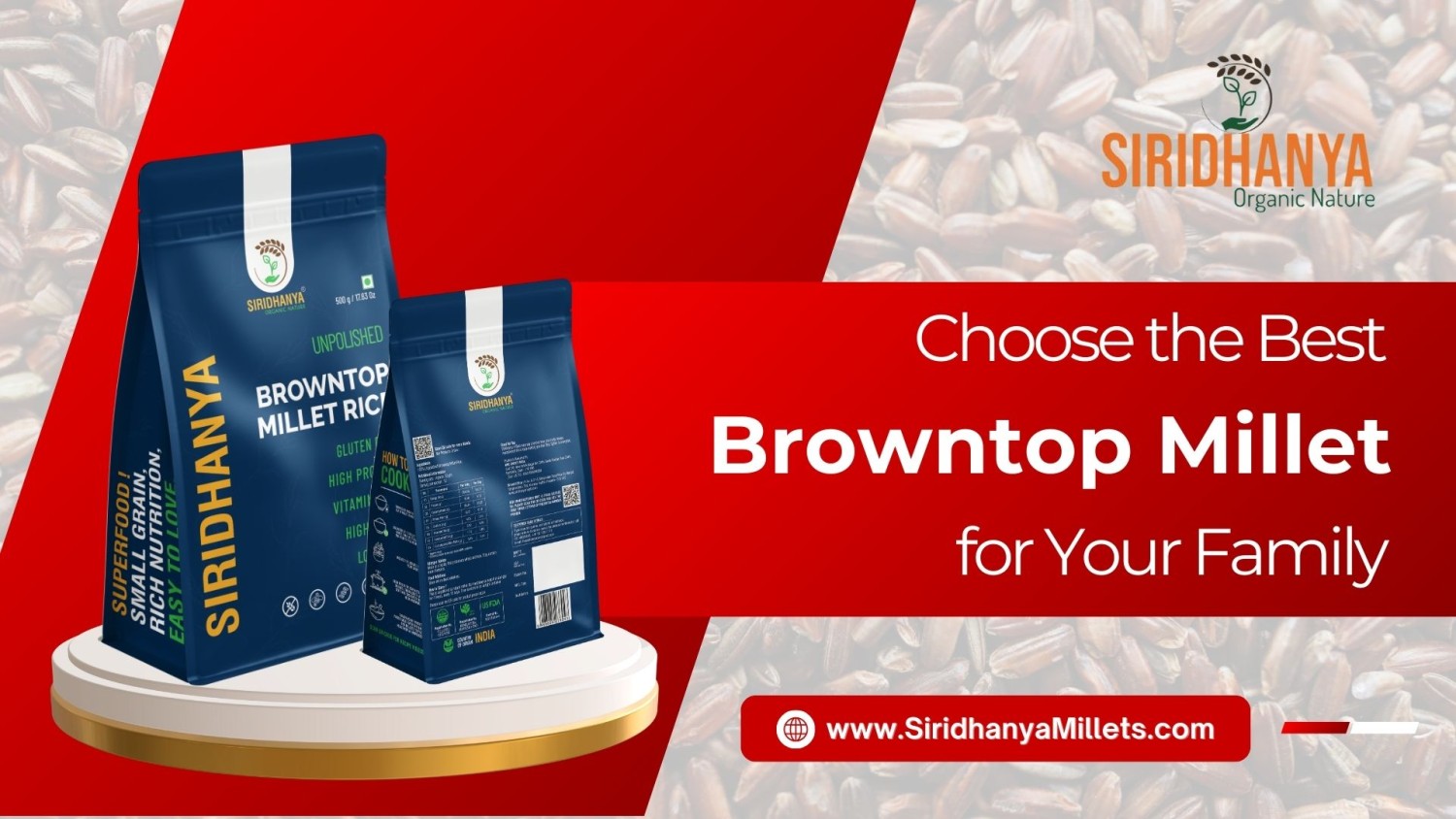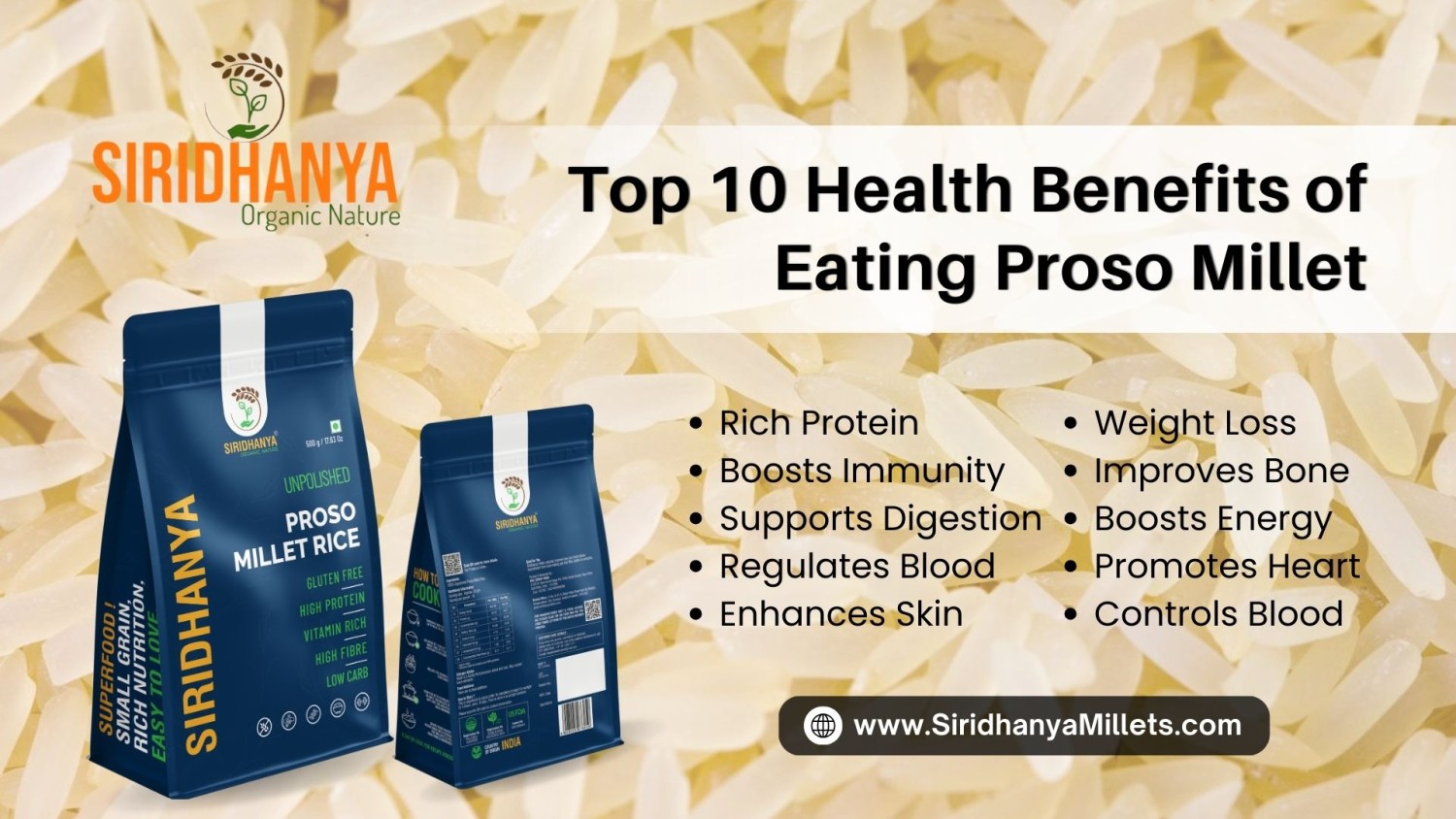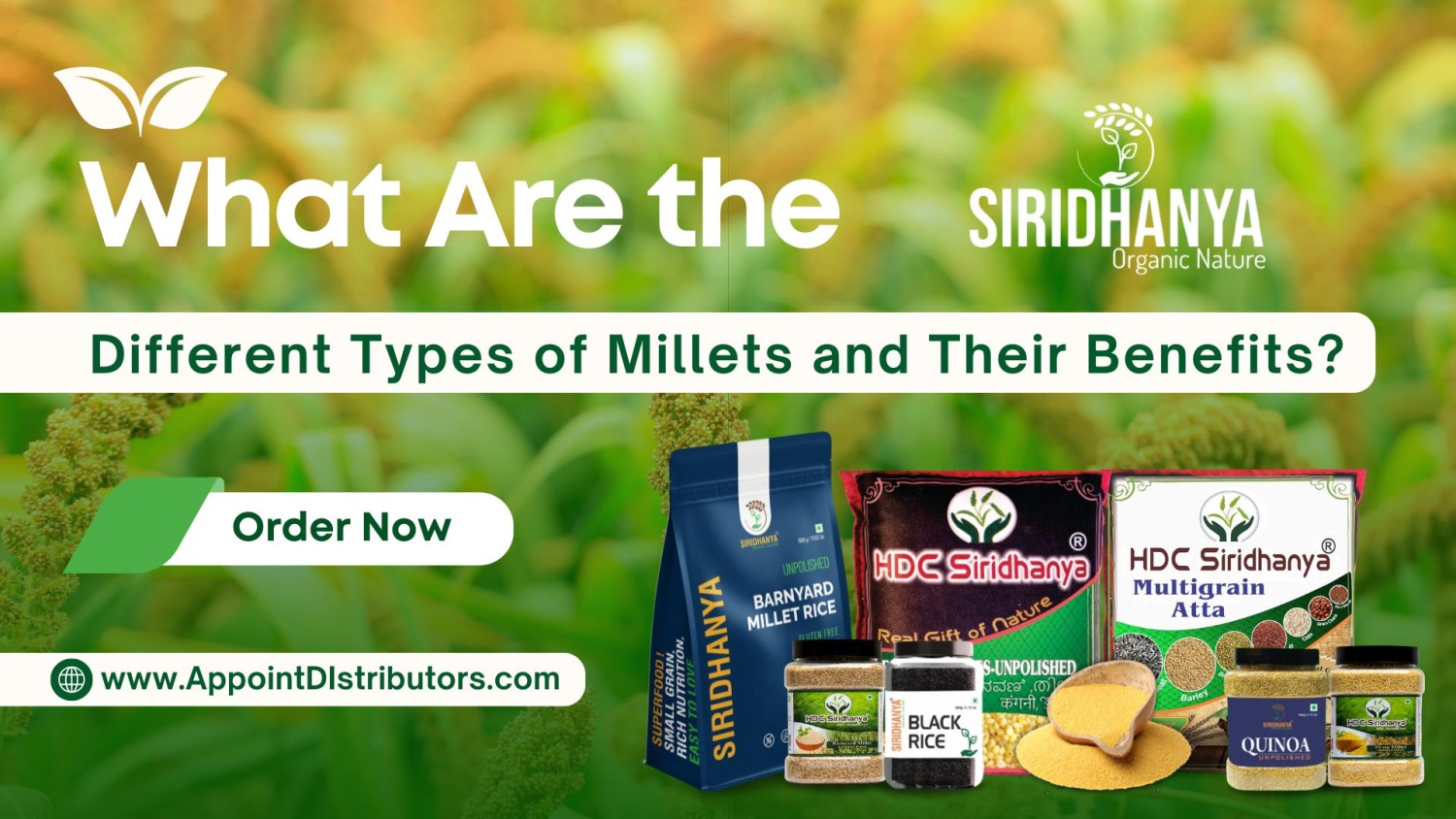What Are Unpolished Millets and Why Should You Eat Them?

There has been a growing trend towards healthier eating and rediscovering traditional grains that our ancestors once thrived on. Among these, millets have made a major comeback, especially in India. These small-seeded grains, once considered humble food, are now recognized as superfoods with a host of health benefits. But not all millets are the same. A key distinction to understand is between polished and unpolished millets. So, what are unpolished millets, and why should you consider making them a staple in your diet? Let’s explore.
Understanding Millets
Millets are a group of ancient grains cultivated mainly in Asia and Africa for thousands of years. Some common types of millets include:
-
Foxtail Millet (Kangni)
-
Kodo Millet (Kodri)
-
Little Millet (Kutki)
-
Barnyard Millet (Sanwa)
-
Browntop Millet (Korle)
-
Pearl Millet (Bajra)
-
Finger Millet (Ragi)
-
Proso Millet (Chena)
These grains are naturally gluten-free and are rich in fiber, protein, and essential micronutrients like magnesium, iron, and B vitamins.
What Does “Unpolished” Mean?
To understand unpolished millets, it’s essential to grasp the difference between polished and unpolished grains.
Polishing is a mechanical process where the outer bran layer of the grain is removed to improve appearance and shelf life. While polished millets may look more uniform and white, they lose significant amounts of fiber, minerals, and nutrients during the process.
Unpolished millets, on the other hand, retain their outer bran layer. They are either hand-pounded or processed minimally to remove only the husk (the non-edible part), keeping the nutritious parts intact. This makes unpolished millets a far superior nutritional choice.
Why You Should Choose Unpolished Millets
Here are several compelling reasons to switch to unpolished millets:
1. Higher Nutritional Value
Unpolished millets retain all the fiber, antioxidants, and micronutrients that polished varieties lose. For example, the fiber content in unpolished millet is nearly three times higher than that of white rice. This fiber helps in maintaining a healthy digestive system and lowers the risk of chronic diseases like diabetes and heart disease.
2. Regulates Blood Sugar Levels
Thanks to their low glycemic index, unpolished millets release glucose slowly into the bloodstream. This helps prevent spikes in blood sugar, making them an excellent dietary choice for people with diabetes or those trying to manage their sugar intake.
3. Rich in Antioxidants
Millets are packed with antioxidants like phenolic compounds and flavonoids, especially in their unpolished form. These antioxidants help fight free radicals in the body, reducing oxidative stress and inflammation. This contributes to a lower risk of chronic diseases such as cancer and neurodegenerative disorders.
4. Supports Weight Management
Due to their high fiber content and low-calorie density, unpolished millets can keep you full for a longer time. This helps in curbing cravings and aids in weight loss or maintenance without compromising on nutrition.
5. Gluten-Free and Gut-Friendly
For those with gluten intolerance or celiac disease, millets are a safe and nutritious alternative to wheat-based grains. Unpolished millets, in particular, are easier on the stomach and promote the growth of good gut bacteria, improving digestion and overall gut health.
6. Better Heart Health
Unpolished millets are rich in magnesium and potassium, which help regulate blood pressure and support heart function. Their high fiber content also helps in lowering LDL (bad cholesterol), further reducing the risk of heart disease.
7. Improves Immunity
Zinc, selenium, and iron found abundantly in unpolished millets strengthen the immune system. Including them regularly in your diet can help your body fight infections more effectively.
8. Environmentally Sustainable
Millets are hardy, drought-resistant crops that require minimal water and chemical inputs. Choosing millets over water-intensive crops like rice is a step toward sustainable living. Supporting unpolished millets also helps small farmers and promotes biodiversity.
How to Include Unpolished Millets in Your Diet
Cooking with unpolished millets is easier than you think. They can be used just like rice or wheat and adapted to a wide range of dishes:
-
Millet Khichdi: A wholesome and comforting dish with vegetables and spices.
-
Millet Dosa or Idli: Fermented and gut-friendly breakfast options.
-
Millet Pulao: A healthy, flavorful one-pot meal.
-
Millet Upma: A quick and filling snack or breakfast.
-
Baking with Millet Flour: You can make pancakes, muffins, or even bread.
Start by replacing a portion of rice or wheat in your meals with millet. Gradually increase the quantity as your body adapts to the high fiber content.
Where to Buy Quality Unpolished Millets
With increasing demand, finding genuine unpolished millets can be a challenge. Many products labeled “millets” may be polished, depriving you of the real benefits. That’s where SiridhanyaMillets.com comes in.
The platform offers a carefully curated selection of siridhanya unpolished millets, sourced from natural farms and processed without harmful chemicals. Whether you’re a beginner or already a millet enthusiast, you can conveniently buy unpolished millets online from their website with assured quality and authenticity.
Final Thoughts
Unpolished millets are more than just a health trend—they're a return to a sustainable, nutritious way of life. By choosing unpolished over polished millets, you not only take care of your body but also support environmentally responsible farming and traditional agricultural practices. Their rich nutritional profile, disease-fighting properties, and ease of cooking make them a powerful addition to your everyday meals.
Start small—swap a bowl of white rice with millets today, and gradually embrace their versatility. Your body (and the planet) will thank you.
Ready to make the switch? Visit SiridhanyaMillets.com to explore a wide range of authentic, high-quality millets and embrace the millet revolution the unpolished way.
Enquire:- Siridhanya Millets
Mob:- +91 93103 81771










